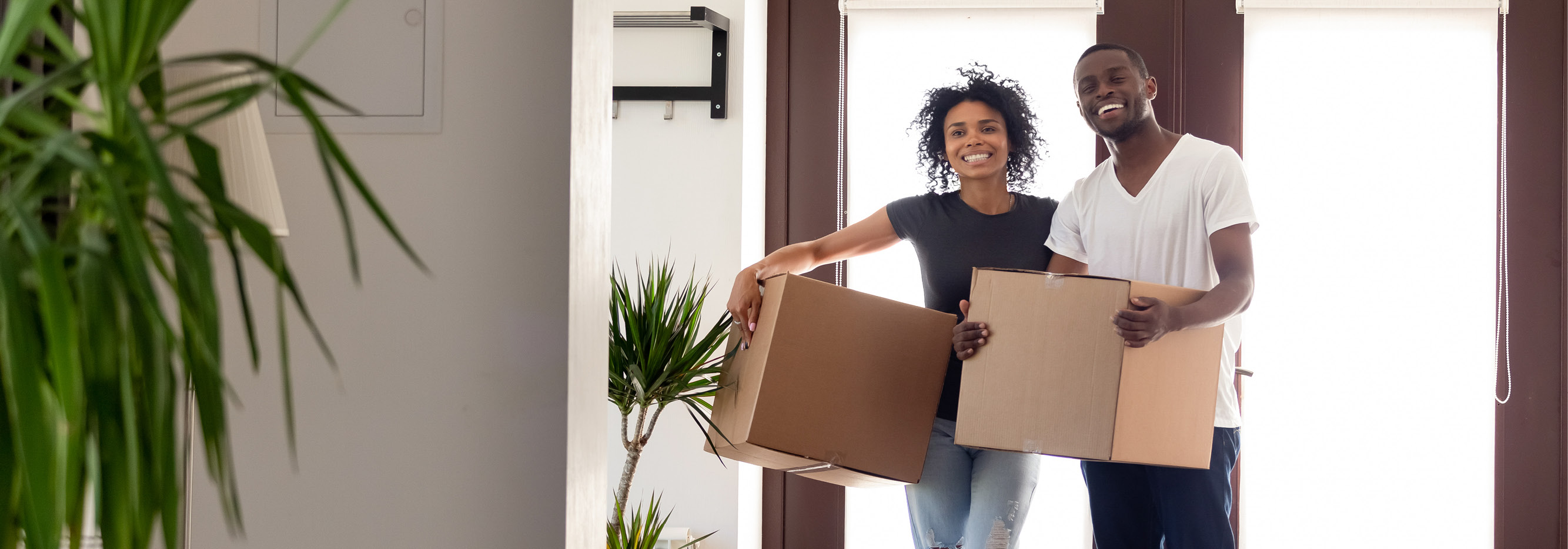Purchasing a home requires a lot of planning. From understanding how much house you can afford, to managing the logistics of moving into your new digs, there are quite a few steps to consider along the way. With so many moving parts, it’s quite easy to make mistakes along the way.
Fortunately, we’ve put together this list of 5 mistakes to steer clear of when purchasing your first home.
Not Knowing What You Can Afford
Many first-time homebuyers are enticed by crafty marketing ads, flyers, and mailers from real estate agents with beautiful pictures of dream homes. While there’s nothing wrong with knowing what you want out of your home, it’s essential to understand that all of those pretty pictures often come with a price.
Know what you can afford before you begin your home search in earnest. You can use a mortgage calculator to plug in some numbers and get an idea of what your monthly payment may be. Additionally, you can start applying for mortgages early in the process to know for what amount you are pre-qualified from lenders. Take a great deal of stress out of the process by knowing what you can buy before you shop.
Not Understanding the True Costs
Buying a home is much more than the sales price. There are quite a few things to take into account when evaluating the entire cost of a home purchase. For one, your lender will likely require you to have homeowners insurance for the duration of your mortgage. Secondly, there are property taxes, sales taxes, and closing costs to take into consideration.
How you pay for all of those things may depend on many factors. With some mortgage products, you may be able to roll your closing costs into your mortgage. With most, you can pay your annual property taxes with your mortgage in the form of an escrow account. Finally, your down payment will affect not only how much you pay at closing but also how much you pay monthly to your lender.
Not Saving Enough for a Down Payment
The single most significant part of your home purchase will be your down payment. While there are a few government-backed options that require no down payment, most conventional loans will need at least 5% down and 20% if you want to avoid paying private mortgage insurance (PMI).
That said, understanding how much you need to put down, saving for that expense, and not wiping out the bank in the process is a bit of an art. Make sure that your down payment will cover the required minimum without spending your last penny. After all, having a house with no emergency savings or money to put into making your home is a dangerous proposition.
Not Keeping Enough in Savings
To our next point, that down payment and closing costs are crucial to your dreams of homeownership, but shouldn’t completely wipe you out when buying a home. You’ll undoubtedly want some wiggle room for making updates, paying for unexpected repairs, or just having some cash on hand for the inevitable home emergency.
There’s nothing wrong with buffering yourself against unplanned home expenditures at the expense of your down payment. Keep enough in savings to cover a catastrophe, such as an entire HVAC system replacement or an emergency flood repair. While you may not be able to keep that much in savings exactly, be sure that you can bear the brunt of a home calamity without having to take out additional funds.
Not Talking to a Loan Expert
Finally, take some time to talk to a loan expert about your mortgage options. The experts at Tidewater Mortgage Services, Inc. have over 20 years of experience helping experienced and first-time homebuyers get the financing they need for their dream homes.
Apply online today and get pre-qualified in as little as 24 hours!


